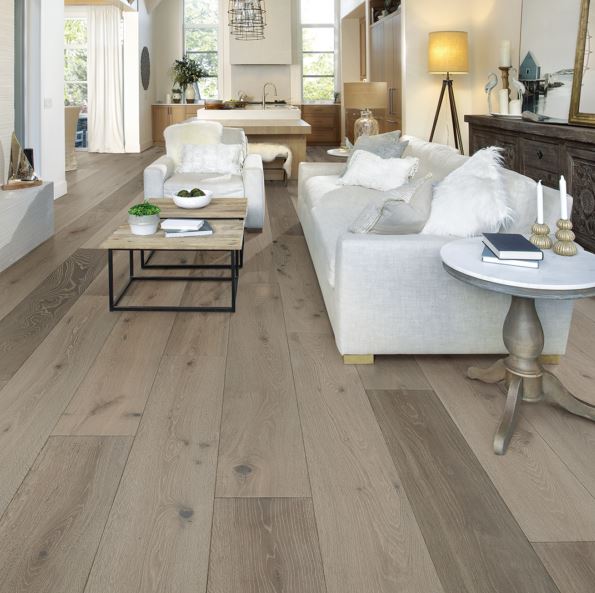When it comes to adding warmth, elegance, and natural beauty to your home, few options rival the appeal of hardwood flooring. However, choosing between solid wood flooring and engineered wood flooring can be a challenging decision. While both offer a timeless look and durability, they differ significantly in construction, performance, and suitability for various environments. Understanding these differences is key to selecting the best option for your lifestyle, budget, and home conditions.
Understanding the Basics
Solid Wood Flooring
Solid hardwood flooring is made from a single piece of natural wood, typically ¾ inch thick. Each plank is milled from a solid block of timber and can be sanded and refinished multiple times. Popular species include oak, maple, cherry, and walnut. Solid wood expands and contracts with humidity, which makes it sensitive to moisture and temperature changes.
Engineered Wood Flooring
Engineered wood consists of a top veneer layer of real hardwood bonded to multiple layers of plywood or high-density fiberboard (HDF) underneath. This layered construction adds dimensional stability and reduces expansion and contraction, making engineered wood ideal for areas with varying humidity levels, such as basements or over concrete slabs.
Key Differences Between Solid and Engineered Wood Flooring
1. Construction and Stability
- Solid Wood: Cut from a single piece of wood, it’s durable but vulnerable to warping in high humidity.
- Engineered Wood: Built with a cross-layered core that resists movement, making it more stable in fluctuating climates.
Verdict: Engineered wood wins for moisture-prone or below-grade areas, while solid wood is suitable for more stable, above-ground environments.
- Appearance and Authenticity
Both solid and engineered wood flooring offer the rich, natural beauty of hardwood. Engineered wood can look nearly identical to solid wood since the top layer is actual hardwood. However, solid wood tends to have a deeper grain and more authenticity in texture and aging.
Verdict: If you value a more traditional or historic aesthetic, solid wood may appeal more. For modern homes or cost-effective luxury, engineered wood offers comparable visual charm.
- Installation Methods
- Solid Wood: Typically nailed or stapled to a wooden subfloor. Not suitable for floating installation.
- Engineered Wood: Offers versatile installation options including glue-down, nail-down, or floating floor systems, and works well over concrete or radiant heating systems.
Verdict: Engineered wood is easier and faster to install, especially in diverse subfloor conditions.
- Refinishing and Longevity
- Solid Wood: Can be sanded and refinished multiple times over decades, extending its life significantly.
- Engineered Wood: Can only be sanded and refinished once or twice depending on the thickness of the top veneer layer.
Verdict: Solid wood provides better long-term value if you plan on staying in your home for many years and want the ability to refinish periodically.
- Moisture Resistance
- Solid Wood: Not recommended for kitchens, bathrooms, or basements due to high sensitivity to moisture.
- Engineered Wood: Handles moisture much better and is ideal for areas prone to dampness or temperature changes.
Verdict: Engineered wood is the better choice in humid or damp environments.
- Cost and Budget
- Solid Wood: Typically more expensive due to the higher cost of raw materials and installation labor.
- Engineered Wood: More affordable, especially in exotic wood finishes. It also requires less expensive installation methods.
Verdict: If budget is a concern, engineered wood provides excellent value for money without sacrificing aesthetics.
Where Each Flooring Type Works Best
- Solid Wood Flooring: Ideal for living rooms, dining areas, bedrooms, and hallways in climate-controlled homes. Best for homeowners who appreciate traditional craftsmanship and long-term investment.
- Engineered Wood Flooring: Perfect for basements, kitchens, bathrooms, and condos or apartments. Ideal for modern lifestyles and homes in variable climates.
Final Thoughts: Which One Is Right for You?
Your choice between solid and engineered wood flooring ultimately depends on your home’s specific needs and your personal preferences. If you’re looking for a long-lasting, refinishing-friendly, and classic option and are willing to invest more, solid hardwood is a great pick. If you need flexibility, moisture resistance, and cost-effective beauty, engineered hardwood might be the smarter solution.
Before making a final decision, consult with flooring professionals, consider your home’s climate, and think long-term about how your flooring will serve your lifestyle. Whichever you choose, both options promise to add natural warmth, style, and lasting value to your home.

